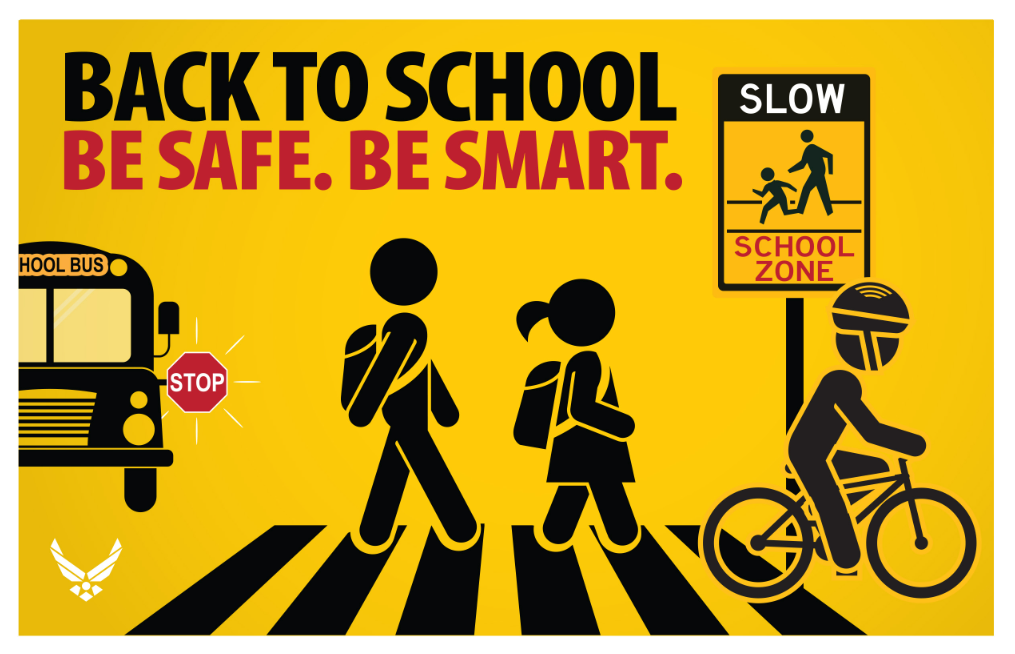In the next two weeks, we will see many students returning to school after the summer break. Pedestrian-vehicle injuries are a leading cause of death for children ages 5 to 14. Kids are back from summer camp, school will be in session again soon, and school buses will be out on the streets. This means drivers need to increase safety around school zones, crosswalks, bus stops, and anywhere children may be playing outside.
Back to School Tips:
1. Be familiar with school zones. Get in the habit of
noticing where school zones and crosswalks are on routes that you normally
take. Accidents, including pedestrian accidents, are far more likely to occur
locally on routes with which drivers are more familiar and comfortable.
2. Stop for school bus lights. Always stop for school buses with flashing red lights. Drivers approaching the bus must come to a full stop for the duration that the red lights are on. Some school buses have flashing yellow lights, which means that drivers may proceed with extreme caution. Bus drivers often engage the flashing yellow lights before the flashing red lights, signaling that they are about to stop.
3. Obey crossing guards. School crossing guards are given
police training and the same authority as local traffic police in most areas,
so disobeying a crossing guard could get you in some serious trouble. Remember
that driving on major streets where crossing guards and crosswalks are present
is safer than taking “short-cut” side streets where children may be
unattended.

4. Anticipate the
worst. Young children find it more difficult to judge the speed and distance of
oncoming cars. Always anticipate the possibility that a small child may run in
front of you by slowing down and preparing to brake.
5. Be careful around parked vehicles. Be especially cautious in areas with parked vehicles on the side of the road. Children waiting to cross may be particularly difficult to see behind parked sport-utility vehicles.
6. Turn your headlights on. Drive with headlights on in
areas with children and pedestrians. The AAA says that using headlights can
reduce pedestrian accidents by about 25 percent.
7. Avoid using cell phones when driving. Cell phones are a known distraction. Never use hand-held cell phones while driving, and never use hands-free cell phones while driving in school zones or areas with children. The same goes for other activities that distract the driver, such as changing CDs, looking at notes, and reading maps.
8. Avoid reversing. Try to avoid reversing your vehicle in
areas with children. It’s more difficult to see small children and attend to
your car’s blind spots while reversing.
9. Don’t speed. Remember that the speed limit in most school
zones during school times or when children are present is 25 miles per hour. In
bad weather or areas with limited visibility, a lower speed is required.
Weather or road conditions may greatly impair your visibility to pedestrians,
your ability to see them, and your stopping distance, so use common sense and
slow down.
10. Don’t honk at pedestrians or bicyclists. Honking at a
child, whether on foot or on a bicycle, is generally not a good idea. The noise
could startle child, causing them to trip or fall and be in a dangerous
position for other approaching traffic.
School Buses and Laws:
Even if you don’t have kids in school, it’s easy to notice the increase in school buses around this time. Laws vary by state, but usually you must stop if a school bus is loading or unloading- regardless of which side of the street it’s on. Passing a school bus while its red lights are flashing is illegal in every state. Watch for school buses stopping at railroad tracks, and make sure to familiarize yourself with the local laws regarding school buses. In their guide, “Reducing Illegal Passing of School Buses,” the National Highway Traffic Safety Administration (NHTSA) reports that many school buses are illegally passed about once a day. Some buses are even passed on the right side, where children might be getting on or off.
Blog content courtesy of Idealease.




